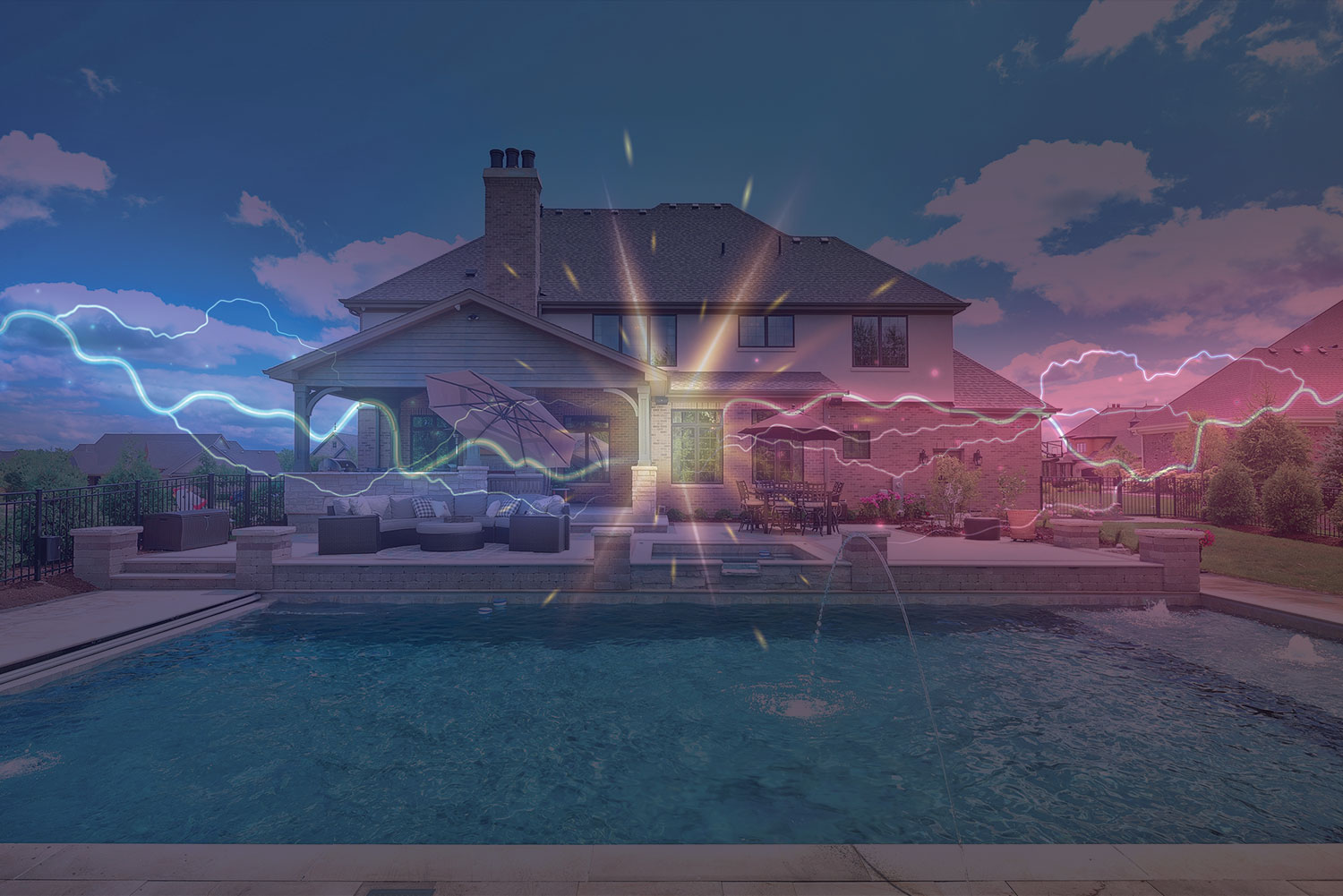“According to Acting Chairman Anne Graham of the U. S. Consumer Product Safety Commission, “The GFCI shock protector constantly monitors electricity flowing through a circuit. If the hair dryer or any electric appliance accidentally topples into the sink or tub, the GFCI will shut down the power in milliseconds to protect the consumer against electrocution or severe electrical burn injuries.” (CPSC News release, October 18, 1989)
But do GFCIs actually protect people from electrocution? GFCIs measure the current flow on the “hot” conductor and compare it to the current flow on the “neutral” conductor. If the GFCI detects more than 5 – 7 milliamperes of difference, it will shut off the circuit.
Let’s use the example of an electric mixer sitting on the kitchen counter. It is plugged into a GFCI-protected receptacle. A person would assume that if the mixer falls into the sink filled with water, the GFCI should trip, preventing any accidental electrocution. If the mixer is immersed in water to the extent that water is in contact with the electrical parts, current will flow from the “hot” conductor into the water. Then, unless there is a path to ground, the same amount of current will eventually flow back to the GFCI through the “neutral” conductor. The GFCI will not detect any difference in current flow, and will not trip the circuit off. But, current will circulate through the water looking for the lowest impedance path.

Photo. 1. Many people leave their appliances plugged in near sinks or tubs.

Photo. 2. If these appliances fall into the water, are you really protected by the GFCI?
If you stick your hands into the water to rescue the mixer, you become one of the many possible paths that current can take back to the neutral. The average resistance of the human body, once electricity starts to flow through it and the blood stream ionizes, is about 500 ohms from hand to hand. Compare this with the resistance of water. Pure water has about 250,000 ohms per meter. As your hands come near the mixer, your body could become the path of least resistance instead of the water. One hundred twenty volts, through the 500 ohms of resistance of your body, would allow about 240 milliamperes of current to flow through you, hand to hand, through your heart. This would be more than enough current to stop your heart.
The GFCI never tripped! All the current flowing out of the “hot” would flow back to the neutral, after flowing through you. You have just become the light bulb on the circuit.
Don’t try this at home! This scenario will occur anytime the body of water, i.e., the kitchen sink, is not grounded.

Photo 3. Common GFCI receptacle
If you have plastic drain lines, the water in the sink is probably not grounded. The only way to get the required 5 – 7 milliamperes of current difference is to provide a path to ground. The old-fashioned cast iron drain lines could serve as a grounding path for the water, but newer homes all use plastic drain lines. An equipotential bonding connection to bond the water, as is now required inNEC-2008, 680.26(C) for swimming pools, would also allow the electricity circulating in the water to drain off, tripping the GFCI. A grounding connection to a metal drain ring in a sink or tub could solve the problem. Another possible solution would be an immersion detection circuit interrupter (IDCI), which detects the presence of water in the appliance and shuts off the circuit at the plug. These devices are already required for hair dryers and could be used on other hand-held electric appliances. But without any means to ground the water, there will be no imbalance in the current and the GFCI will not trip.

Photo 4. How safe from electrocution are you?
But before you decide to throw out the GFCIs, in some cases the GFCI may actually save your life. If the sink in the previous example was in an area that had a concrete slab-on-grade floor, and you were standing barefoot on the concrete, you would become the ground path. Current flowing through you to ground would create the necessary imbalance and trip the GFCI. While this would be painful, you would probably survive the experience.
Remember, contrary to popular belief, you can be electrocuted on a GFCI-protected receptacle. GFCIs only detect imbalances in the current between the hot and the neutral. They cannot tell if the power is lighting up the light bulb or you.














Find Us on Socials